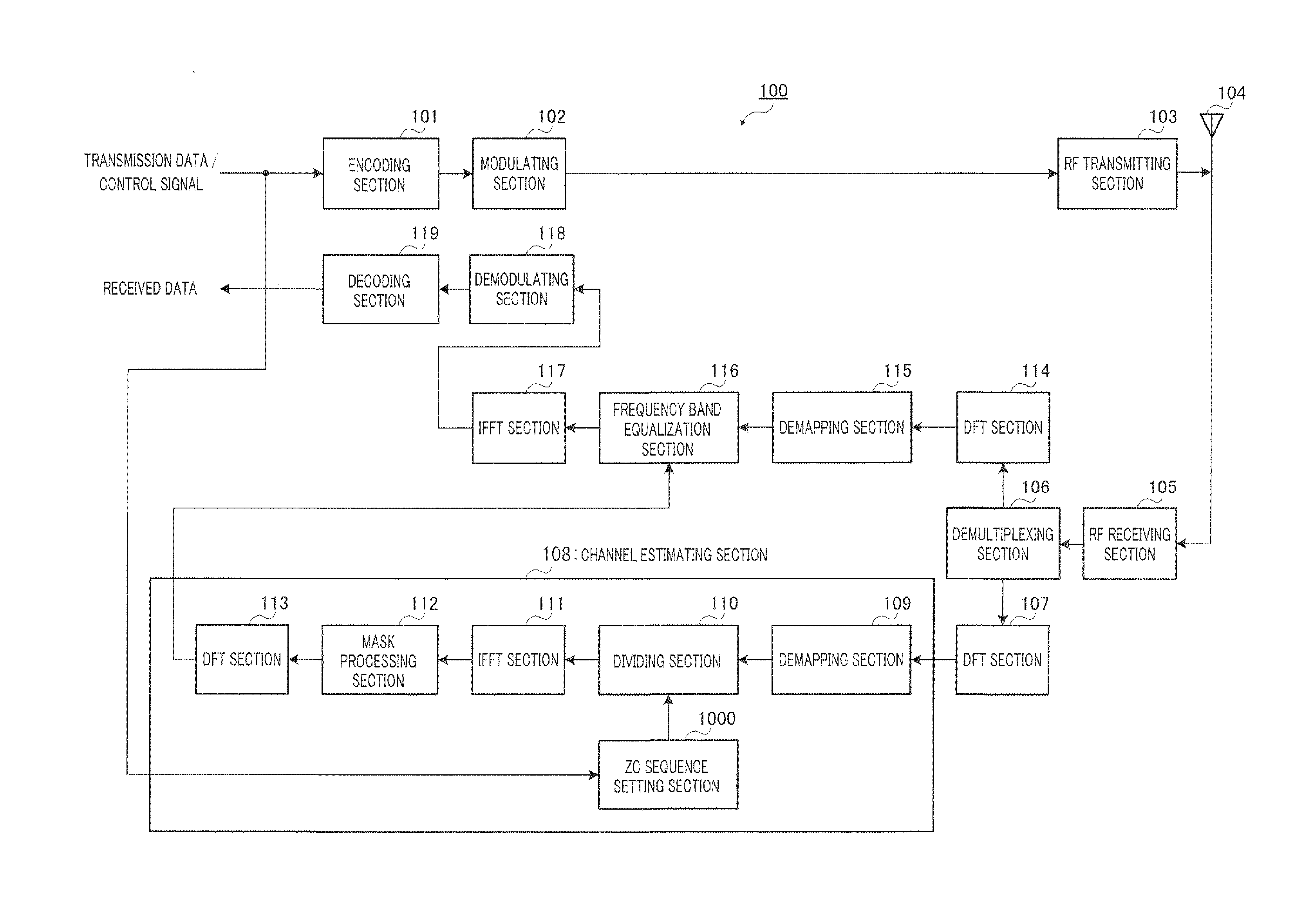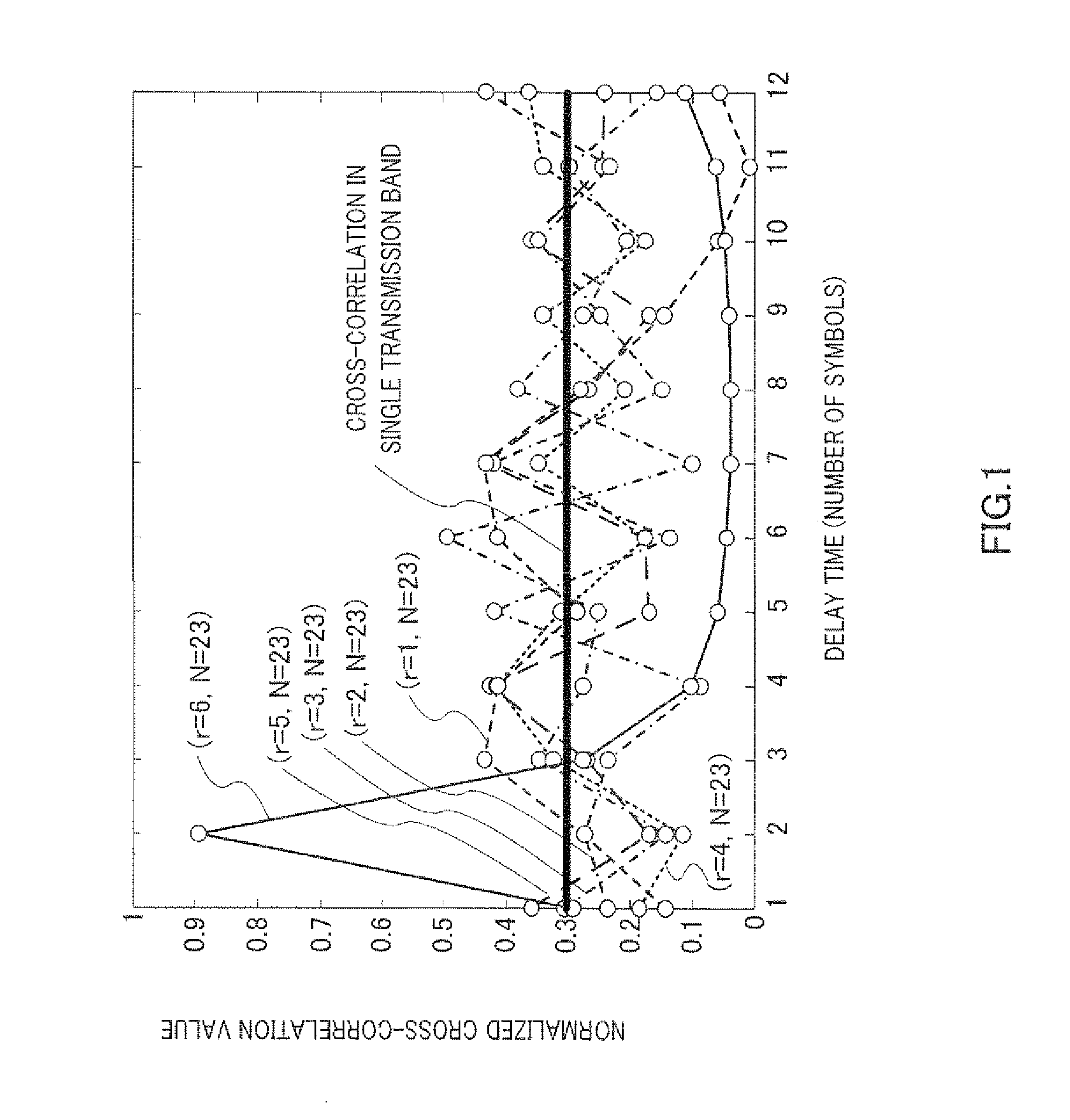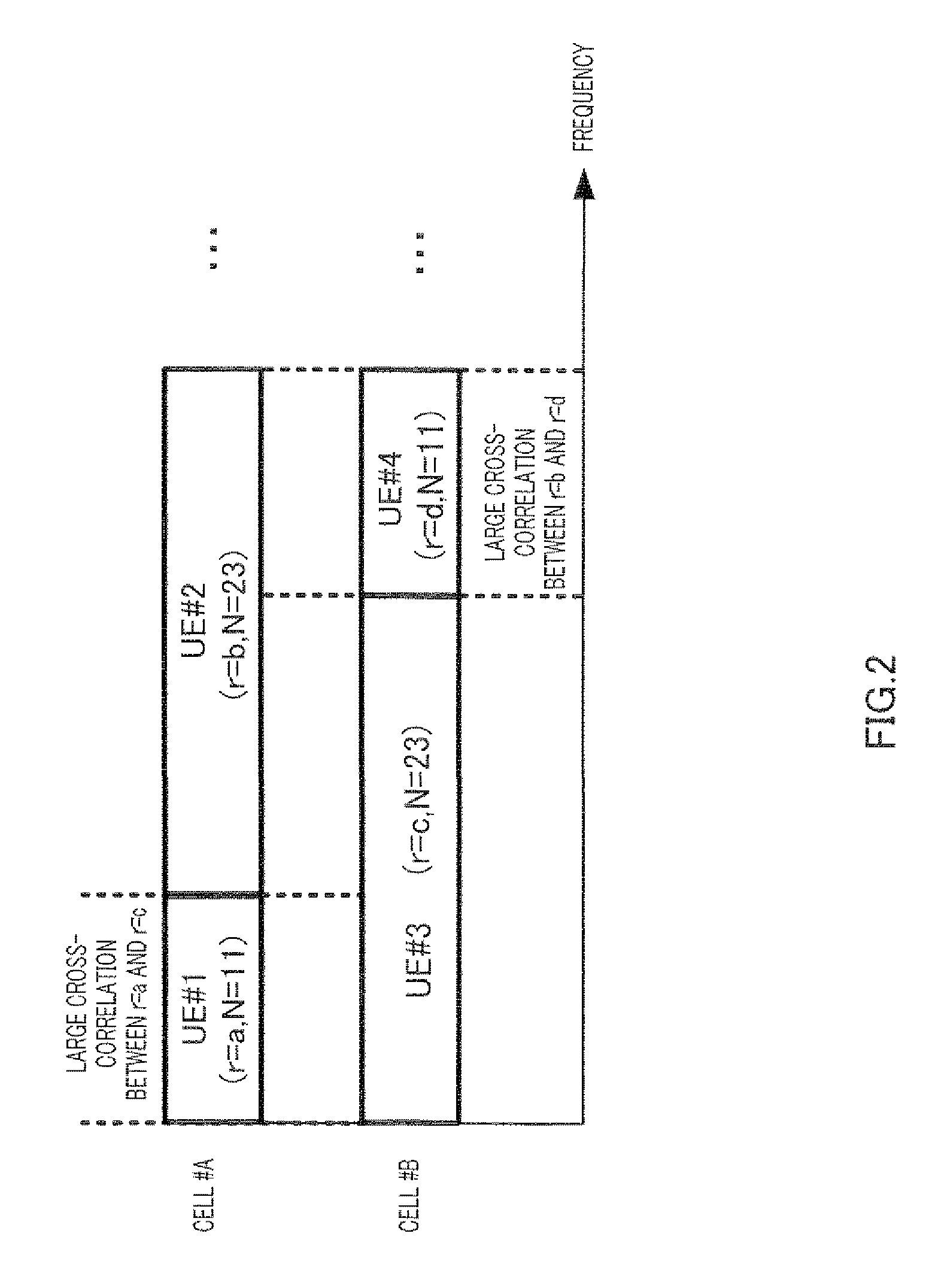Sequence Allocating Method and Wireless Mobile Station Device
- Summary
- Abstract
- Description
- Claims
- Application Information
AI Technical Summary
Benefits of technology
Problems solved by technology
Method used
Image
Examples
embodiment 1
[0042]FIG. 7 is a flowchart showing the process of a sequence allocating method in a cellular radio communication system according to Embodiment 1 of the present invention.
[0043]First, in step (hereinafter “ST”) 101, the reference sequence length Nb and the reference sequence number rb are set for a generated sequence group. Here, the sequence number rb corresponds to the sequence group number and is lower than Nb.
[0044]In ST 102, the number of RB's, m, is initialized to 1.
[0045]In ST 103, the threshold Xth1(m) and threshold Xth2(m) that are associated with the number of RB's m is set. Here, the method of setting the threshold Xth1(m) and Xth2(m) will be described later.
[0046]In ST 104, the ZC sequence length N associated with the number of RB's m is set. The number of RB's m and the sequence length N are uniquely associated. For example, N is the prime number that is larger than the maximum possible size of transmission with the number of RB's, m, and that is the closest to this si...
PUM
 Login to View More
Login to View More Abstract
Description
Claims
Application Information
 Login to View More
Login to View More - R&D
- Intellectual Property
- Life Sciences
- Materials
- Tech Scout
- Unparalleled Data Quality
- Higher Quality Content
- 60% Fewer Hallucinations
Browse by: Latest US Patents, China's latest patents, Technical Efficacy Thesaurus, Application Domain, Technology Topic, Popular Technical Reports.
© 2025 PatSnap. All rights reserved.Legal|Privacy policy|Modern Slavery Act Transparency Statement|Sitemap|About US| Contact US: help@patsnap.com



